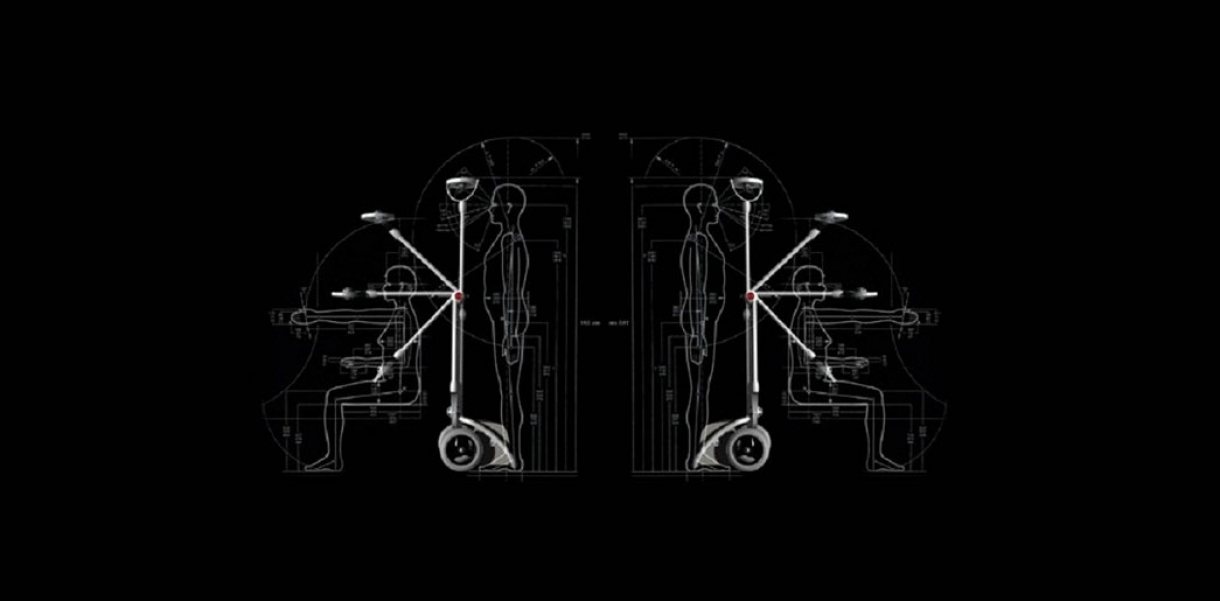With the successful flight of SpaceShipOne, its designer, Burt Rutan, caps a long career as designer and producer of radically innovative private aircraft. In the past, space travel has only been possible with the backing of well-funded, huge government space programs. Like Lindbergh's 1927 flight that ushered in the modern airline industry.
Functionality and use of design
SpaceShipOne is launched from beneath a turbofan-powered White Knight aircraft at 50,000 feet, then is powered by a hybrid rocket motor at 2,000 mph. straight up into space, then glides back to earth. See enclosed diagram of SpaceShipOne architecture.
How did this design improve life?
With the successful suborbital flight of SpaceShipOne, its designer, Burt Rutan, caps a long career as designer and producer of radically innovative private aircraft. In the past, space travel has only been possible with the backing of well-funded, huge government space programs. But the creators of SpaceShipOne, the first non-government manned spacecraft, set out to change that.
On October 4th, 2004, the ship won the $10 million Ansari X Prize by rocketing 100 km (62 miles) into space. The competition challenged independent designers to safely put three people into space twice in two weeks with a reusable spacecraft.
This prize wasn't the ultimate motivation for the development of SpaceShipOne, however. The spaceship's creators envision a world where space travel is a thriving commercial business catering to anyone who has the desire to venture to the stars.
While that may sound far-fetched, consider that Charles Lindbergh's historic 1927 solo flight from New York to Paris won the $25,000 Orteig Prize. And it was Lindbergh's successful flight that ushered in the modern airline industry. So, years from now, when space tourism is as common as a trip to Disney World, we may look back on SpaceShipOne as the undertaking that turned a page in history.
Sir Richard Branson’s Virgin Group has entered into an agreement to license SpaceShipOne technology to develop the world’s first privately funded spaceships dedicated to carrying commercial passengers on space flights.
Virgin has formed Virgin Galactic (‘V.G.’) a new company, which will become the world’s first commercial space tourism operator. It is envisaged that Virgin Galactic will open for business by the beginning of 2005 and subject to the necessary safety and regulatory approvals begin operating flights from 2007. It is expected that around £60 million ($100 million) will be invested in developing the new generation of spaceships and ground infrastructure required to operate a sub orbital space tourism experience. Over five years Virgin expects to create around 3000 astronauts and the price per seat on each flight, which will include at least three days of pre-flight training, are expected to start at around £115,000 ($190,000). Virgin will reinvest the proceeds in developing a new generation of vehicles for further space ventures. To date the cheapest space tourism experiences in government built and taxpayer funded spaceships cost over $15,000,000 per seat.
It is important to understand SpaceShipOne as a natural extension of Burt Rutan’s 40-year history of creating radical and innovative aircraft, such as Voyager, with its record breaking, nine-day, nonstop unfueled flight around the world in 1987.
Drawbacks of life improvement
Space flight, whether sponsored by governments or private ventures, suggests any number of disaster scenarios. Pushing the frontier of innovation involving people and technology carries risks. How to assess the risks – vs. – rewards? People died developing aircraft and orbital space flight. The greatest numbers of accidental deaths are people driving to work in their cars. Rigorously tested and approved drugs turn out to cause heart disease or cancer. Nobody can guarantee 100 per cent protection from unforeseen consequences.
Research and need
Creating a totally new kind of spacecraft from the ground up comes with its own set of challenges. Chief Engineer Gionta delves into some of the hurdles the Scaled team faced when creating SpaceShipOne.
"Lots of technical challenges," Gionta says to sum up the experience. He continues:
[There are] all kinds of areas that we've never delved into before. Supersonic flight -- we've never done a supersonic airplane before. As a matter of fact, I don't think any small company's ever done a supersonic airplane before. So, I think we're the first to bite off all the transonic aerodynamics with such a small group of people.
The design of a craft capable of traveling at faster than the speed of sound has unique characteristics and requirements. The designers have to pay special attention to performance, aerodynamics, load characteristics, stability and control of a ship that is meant to travel at both sonic and supersonic speeds.
The equipment needed to create and test such a craft isn't exactly an off-the-shelf technology. And that equipment came at no small price. Gionta explains:
Our whole goal was to prove that sub-orbital space tourism could be done very economically, and in so doing we always had to opt towards the least sophisticated but most robust solution for any problem that we were up against -- and always try to keep the cost down. So that was a biggie.
In many cases the Scaled team had to create the tools and features needed to make SpaceShipOne work. As an example, Gionta explained how the reinvented reaction control system on SpaceShipOne works:
When we're out in space, all you need to do is release a puff of air in a direction to give you a reaction force to push you the other way. That's pretty much what [a reaction control system] is. We have high-pressure air stored in bottles on the ship, and we release a little blast of air for about one second on, say, the right wing tip pointing up. And that is enough when you're in space to push that wingtip down. So it effectively rolls the aircraft, and that's your controls when you're out in space. It's the same thing a spaceship or the shuttle uses, except on a much, much smaller scale and much more economical. So we had to develop that. We created a fixed-based, full-mission simulation of the craft so we could size our reaction control system.
Additional challenges came in the form of air launching a spaceship: ... air launching another vehicle -- that was another something we hadn't done before ... Other craft [like] B-52s drop vehicles pretty regularly, but it was something new to us so that was a bit of a challenge, too. And it worked well, and so far we've just gotten pretty darn lucky, or, I don't know, maybe we know what we're doing. Who knows?
Designed by
Burt Rutan (United States), 2004






